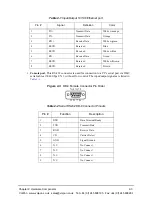
Chapter 1: Overview
1-6
Capabilities
PacketSaver
™
reduces bandwidth consumption
PacketSaver packet multiplexing technology reduces the amount of IP bandwidth required to sup-
port multiple calls flowing between two endpoints. PacketSaver minimizes bandwidth usage by
aggregating samples from multiple VoIP conversations and packing them into a larger IP packet
with a single IP header. The process removes the need to send a bulky IP header with individual
voice packets. As a result, it eliminates the transmission of redundant information.
.
Virtual Tie Line
Tenor BX
can emulate a tie trunk. It provides all of the functionality of a tie trunk, including the con-
siderable cost savings, but eliminates the need for a PBX trunk to be configured, or marked as a tie
trunk. A traditional tie trunk is a PBX-configured direct connection between two PBXs in separate
locations. The tie trunk bypasses the PSTN network.
Your PBX does not need any additional configuration.
Tenor BX
treats all the trunks the same with-
out compromising voice quality.
SNMP Support
The
Tenor BX
supports Simple Network Management Protocol (SNMP), the standard protocol used
to exchange network information between different types of networks. The
Tenor BX
unit acts as an
SNMP agent—using HP®
Openview™—to receive commands and issue responses to the Network
Manager. The Network Manager will then be able to perform certain functions, such as receiving
traps from the
Tenor BX
.
Conventional VoIP Transmission Sends Many Redundant Packet Headers
Tenor
Tenor
Tenor using PacketSaver to Minimize Bandwidth Usage
VoIPon www.voipon.co.uk [email protected] Tel: +44 (0)1245 808195 Fax: +44 (0)1245 808299












































